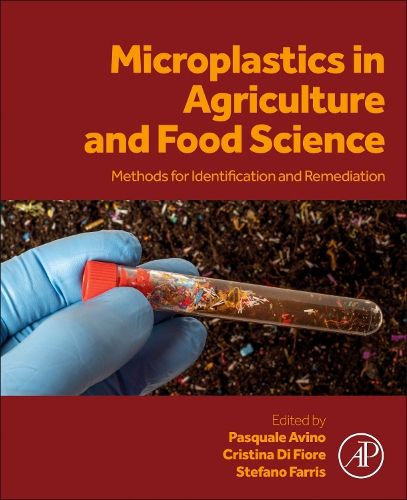Readings Newsletter
Become a Readings Member to make your shopping experience even easier.
Sign in or sign up for free!
You’re not far away from qualifying for FREE standard shipping within Australia
You’ve qualified for FREE standard shipping within Australia
The cart is loading…






Microplastics in Agriculture and Food Science: Methods for Identification and Remediation presents fundamental insights into the sources of microplastics and their impact on important agricultural, food, and environmental resources. Presenting insights into these highly related fields, this book is the first to enable cross- and multidisciplinary understanding and application.
Microplastics are tiny particles created during plastic production as well as those particles remaining when plastic degrades and breaks down. They are sometimes difficult to identify, and the methods for qualifying and classifying them are not always clear despite the importance of their recognition and remediation. With insights into analytical methods including the challenges, this book addresses microplastics from the farm to the food pyramid, highlighting the issues they raise and the options for removing them.
Written by a global team of experts, this volume contributes to further understanding and addressing of this increasing global challenge, and is an excellent resource for researchers in agricultural science, environmental science, and food science (particularly food chemistry and food packaging).
$9.00 standard shipping within Australia
FREE standard shipping within Australia for orders over $100.00
Express & International shipping calculated at checkout
Microplastics in Agriculture and Food Science: Methods for Identification and Remediation presents fundamental insights into the sources of microplastics and their impact on important agricultural, food, and environmental resources. Presenting insights into these highly related fields, this book is the first to enable cross- and multidisciplinary understanding and application.
Microplastics are tiny particles created during plastic production as well as those particles remaining when plastic degrades and breaks down. They are sometimes difficult to identify, and the methods for qualifying and classifying them are not always clear despite the importance of their recognition and remediation. With insights into analytical methods including the challenges, this book addresses microplastics from the farm to the food pyramid, highlighting the issues they raise and the options for removing them.
Written by a global team of experts, this volume contributes to further understanding and addressing of this increasing global challenge, and is an excellent resource for researchers in agricultural science, environmental science, and food science (particularly food chemistry and food packaging).